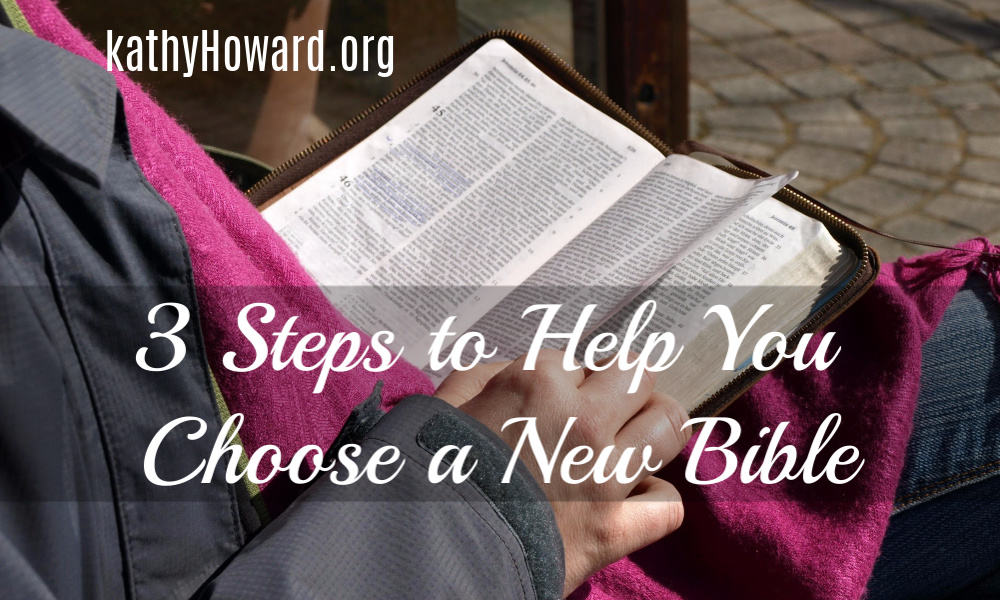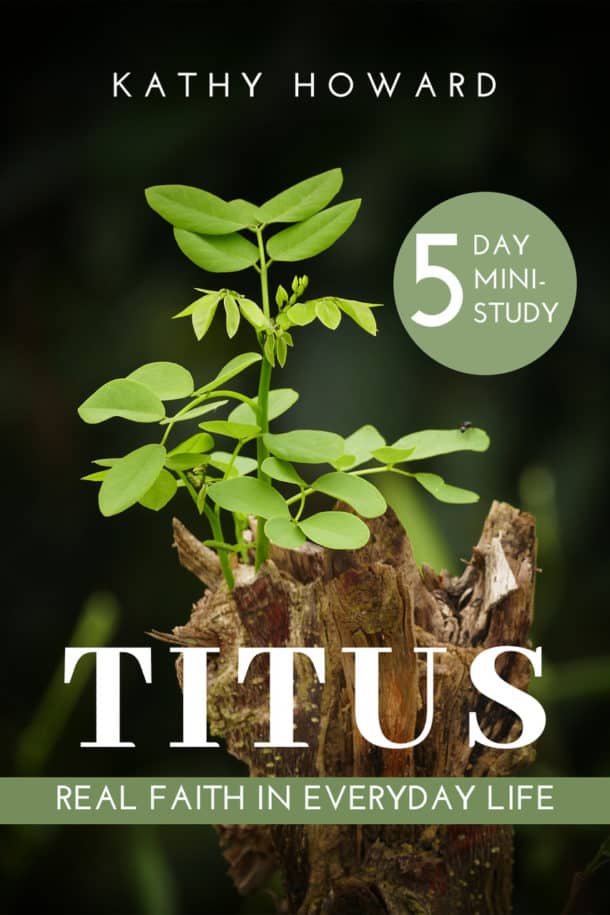Time to choose a new Bible, but overwhelmed with the sheer volume of the choices available? Dozens of translations combined with a myriad of features yields hundreds – if not thousands – of specific Bibles to choose from. Selecting a new Bible can be a daunting task!
Before you throw your hands up in surrender, keep reading. This post will walk you through a simple 3-step process to help you choose the Bible that will best meet your needs.
Since many of you probably already have one or more Bibles, the first step is to determine why you need another Bible and which Bible that should be. For study, I use this single-column, ESV journaling Bible. And yes, I need the large print!
3 Steps to a New Bible!
- Determine Your Primary Purpose – How do you intend to use this new Bible? Your purpose will guide the next two steps. Maybe one of the following describes your intended purpose:
- In-depth study (For practical Bible study help, see “4 R Bible Study Method for Everyday Use.“)
- Devotional reading (You may enjoy “How to Get the Most Out of Your Daily Devotional.“)
- Casual reading/simple enjoyment!
2. Choose the Translation – Unless you read Hebrew and Greek – the original language of the Bible – you must choose from one of the many English translations of the Bible. There are three basic levels or groups of translations. One of these groups will better align with your purpose than the others. Also, it’s always helpful to have more than one translation. You can compare the same passage in different translations for a greater understanding. (Also see “Why are there so Many Bible Translations?” and this helpful translation chart.)
- Word-for-Word (also known as Formal Equivalent) – These translations are the closest to the grammar and syntax of the original language as possible, but they can often sound wooden. Also this kind of translation makes no consideration for cultural changes. This kind of translation is a great choice for in-depth Bible study. (Ex: Amplified, NKJV, NAB, ESV, NASB. Note: NIV falls somewhere between the Formal and Dynamic Equivalent)
- Thought-for-thought (also known as Dynamic Equivalent) – These translations work to keep the overall original thought rather than attempt a literal word for word translation. Although not as literally as accurate as the Formal Equivalent, they are much easier for 21st century westerners to understand. For instance, Dynamic Equivalent translations change idioms, figures of speech, and measurements into “equivalent” terms that we will understand. This kind of translation is still close enough to the original to be good for Bible study, but it can also be used for devotional reading. (Ex: NLT, CEV)
- Paraphrase – This translation group departs the furthest from the original language but it provides a fresh reading experience. A paraphrase is more of a big idea-for-big idea translation. This translation group is fine for devotional reading but not a good idea for study. With the paraphrase’s “storytelling” format, it would be great for family devotions with young children. (Ex: The Message)
- Select the Features You Want – Ah, there is no end to the possible tools, special editions, and unique features you can get in the different Bible translations. Select the ones that best meet your needs and circumstances. By the way, at ChristianBook.com you can refine your Bible search by translation and features! Here is a sampling:
- Study Bible – includes book introductions, character studies, notes, etc.
- Tabs – helps you quickly find individual books
- Cross-references – read related passages
- Concordance – alphabetical index of words and where they are found in the Bible
- Dictionary – definitions of Bible words and terms
- Journaling space – empty wide margins on every page gives room to journal or draw
- Large print – hard time reading tiny print? This may be for you!
- Maps, charts, timelines – helps you step into Bible times
- Devotional – will help you meditate on and apply the passages
- Focus on a select audience like women, students, men, children
- Parallel translations – shows more than one translation side-by-side
You’re almost there! Choose the translation based on your purpose. Then add in the features you’re most interested in. Congratulations on your new Bible!
What was the last Bible you purchased? Why did you choose that particular one?
Helpful articles and posts:
- Choosing a Bible Translation
- Why are there so Many Bible Translations?
- Bible Verse Comparison
- Bible search at ChristianBook.com



Wonderful tips!!!
The last Bible I purchased was The New Spirit-Filled Life Bible.
It was in my favorite translation (NKJV).
I liked special features like “Word Wealth” that breaks down Greek and Hebrew words, and “Kingdom Dynamics”
Other deciding factors for ANY other Bible that I purchases are: Are the words of Jesus in RED and are all of the pronouns for God, Jesus and the Holy Spirit capitalized.
Kela, I will have to check out the”Word Wealth” feature! Thanks for sharing!
I’ve always loved the Amplified Bible. I didn’t realize until recently that there was a newer version. Do you know anything about the difference between the two?
Hi Marilyn, I really didn’t know anything about the difference but I just did a quick search. I found this description at BibleGateway you may find helpful: https://www.biblegateway.com/versions/Amplified-Bible-AMP/
Can you explain the verse about God will not give us more than we can handle.
Hi Carolyn, thanks for coming by! That saying seems to be based on 1 Corinthians 10:13 in which God promises that He will never allow us to be tempted to sin beyond what we can bear, but that He will always provide an escape from the temptation. Unfortunately it has been misapplied to say that God will never allow our difficult circumstances to be more than we can bear. I wrote a blog a while back that explains this in more detail. Here’s the link: https://www.kathyhoward.org/the-real-promise-of-1-corinthians-1013/